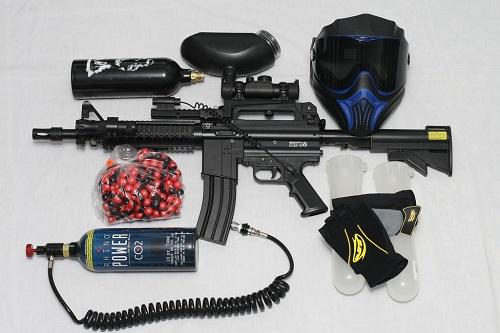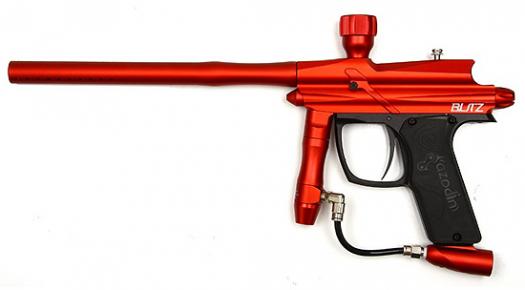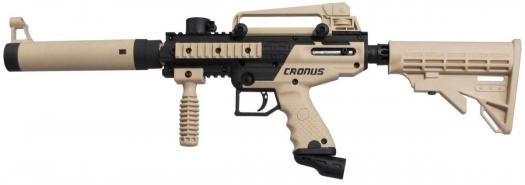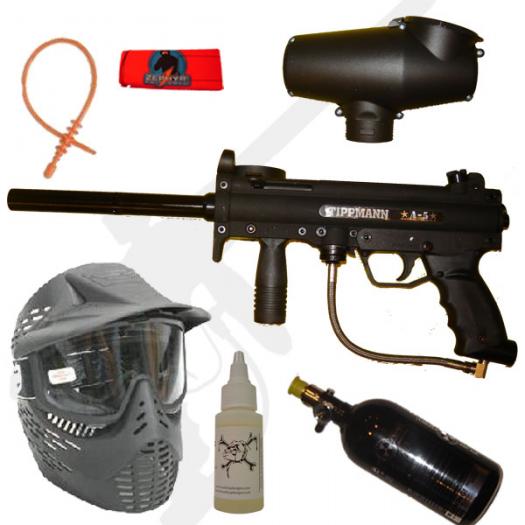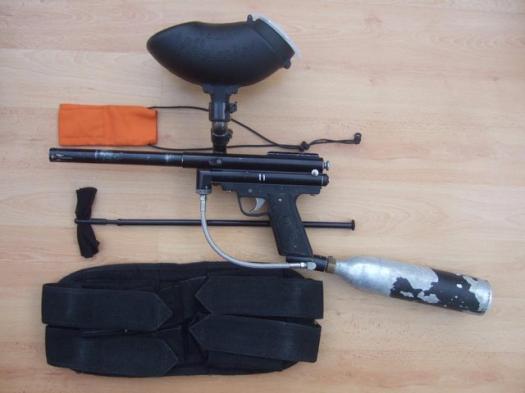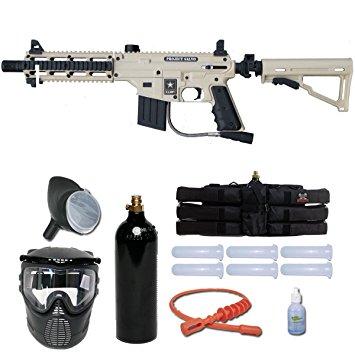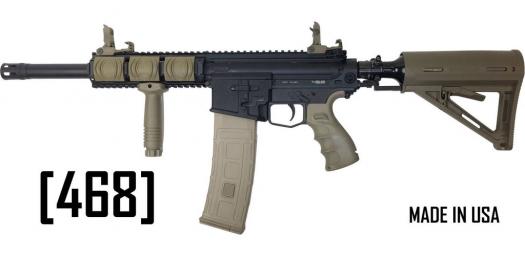What Do You Know Of The Paintball Gun?

The paintball gun is an equipment used in paintball sport. It is used in targeting and shooting trees or cattle. Take this quiz to examine your knowledge of paintball.
- 1.
An ideal paintball gun has how many components?
- A.
5
- B.
6
- C.
4
- D.
3
Correct Answer
C. 4Explanation
An ideal paintball gun has four components.Rate this question:
-
- 2.
The muzzle velocity of paintball markers is
- A.
30 ft/s
- B.
300 ft/s
- C.
200 ft/s
- D.
100 ft/s
Correct Answer
B. 300 ft/sExplanation
The correct answer is 300 ft/s because it is the highest option provided. Muzzle velocity refers to the speed at which a projectile, in this case, a paintball, is propelled out of the marker. A higher muzzle velocity indicates a faster speed, which can result in a greater distance and impact when the paintball hits its target. Therefore, 300 ft/s is the most likely option for a paintball marker's muzzle velocity.Rate this question:
-
- 3.
Which of the following is not a component of paintball marker?
- A.
Barrel
- B.
Shooter
- C.
Body
- D.
Gas system
Correct Answer
B. ShooterExplanation
The shooter is not a component of a paintball marker. A paintball marker typically consists of a barrel, body, and gas system. The barrel is responsible for directing the paintball towards the target, the body houses the internal mechanisms of the marker, and the gas system provides the necessary pressure to propel the paintball. The shooter is not a recognized component in the context of paintball markers.Rate this question:
-
- 4.
The following are associated with paintball gun except
- A.
Paintball marker
- B.
Trigger frame
- C.
Paintball shooter
- D.
Paint gun
Correct Answer
C. Paintball shooterExplanation
The term "paintball shooter" is not commonly used to refer to a paintball gun. The correct term for a paintball gun is "paintball marker." The other options listed, such as trigger frame and paint gun, are all commonly associated with paintball guns. Therefore, the correct answer is "Paintball shooter."Rate this question:
-
- 5.
Which of the following does not exist in mechanically operated paintball marker?
- A.
Sheridan valve
- B.
Sterling valve
- C.
Nelson valve
- D.
Solenoid
Correct Answer
D. SolenoidExplanation
A solenoid does not exist in a mechanically operated paintball marker. A solenoid is an electrical component that is used in electronic paintball markers to control the firing mechanism. In a mechanically operated marker, the firing mechanism is operated manually, typically by pulling a trigger or cocking a hammer. Therefore, a solenoid is not necessary in a mechanically operated marker as it does not require any electronic control.Rate this question:
-
- 6.
Examples of paintball marker that engages Sheridan valves are these except
- A.
Sheridan K2
- B.
Worr games product sniper
- C.
Chipley custom machine S6
- D.
Sheridan K5
Correct Answer
D. Sheridan K5Explanation
The given answer, Sheridan K5, is incorrect because it is actually an example of a paintball marker that engages Sheridan valves. The question asks for examples of paintball markers that do not engage Sheridan valves, so the correct answer should be one of the other options listed: Sheridan K2, Worr games product sniper, or Chipley custom machine S6.Rate this question:
-
- 7.
Examples of paintball markers that engage double action internals are these except
- A.
Line Si Advantage
- B.
Rapide
- C.
Tippman 98
- D.
Brass Eagle Barracuda
Correct Answer
C. Tippman 98Explanation
The Tippman 98 is not an example of a paintball marker that engages double action internals.Rate this question:
-
- 8.
In which of the following is a blow forward semi-auto internal not used?
- A.
Tiberius Arms T8
- B.
Tippman X-8 Phenom
- C.
Air Guns Design Auto-Mag
- D.
Typhoon
Correct Answer
D. TyphoonExplanation
The Typhoon is the only option listed that does not use a blow forward semi-auto internal.Rate this question:
-
- 9.
Which of these is not an example of a pneumatically operated paintball?
- A.
WGP Autococker
- B.
Typhoon
- C.
Palmer's Pursuit Shop Blazer
- D.
Tiberius Arms T8
Correct Answer
D. Tiberius Arms T8Explanation
The Tiberius Arms T8 is not an example of a pneumatically operated paintball because it is a magazine-fed paintball marker that uses CO2 or compressed air to propel the paintballs, rather than being operated solely by pneumatic mechanisms. The other options listed, such as the WGP Autococker, Typhoon, and Palmer's Pursuit Shop Blazer, are all examples of paintball markers that are pneumatically operated.Rate this question:
-
- 10.
Which of the following is not a ramping mode in paintball guns?
- A.
PSP Ramping
- B.
NXL Ramping
- C.
Auto Ramping
- D.
Millennium Ramping
Correct Answer
C. Auto RampingExplanation
Auto Ramping is not a ramping mode in paintball guns. PSP Ramping, NXL Ramping, and Millennium Ramping are all recognized ramping modes in paintball guns. Auto Ramping is not commonly used or recognized as a ramping mode in the paintball community.Rate this question:
-
Quiz Review Timeline +
Our quizzes are rigorously reviewed, monitored and continuously updated by our expert board to maintain accuracy, relevance, and timeliness.
-
Current Version
-
Mar 21, 2023Quiz Edited by
ProProfs Editorial Team -
Mar 17, 2018Quiz Created by
Timmy198
 Back to top
Back to top




